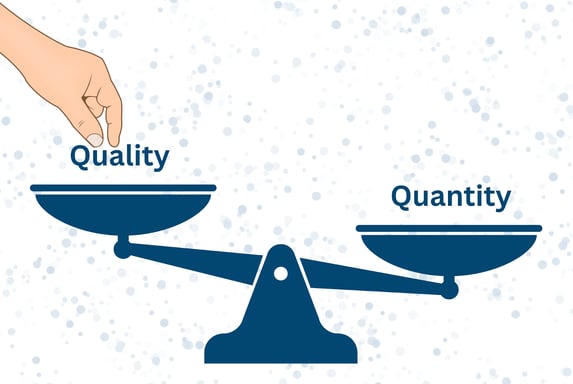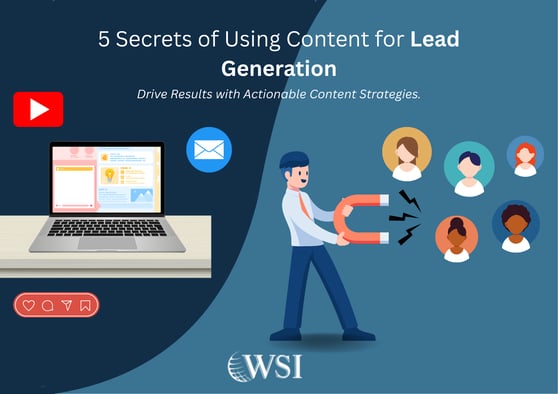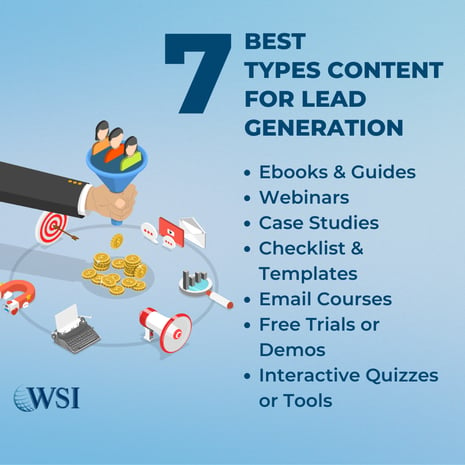|
What You’ll Learn:
So, grab a coffee (or your preferred caffeinated fuel) and let’s get into the stuff that works. |
Over 70 million new blogs are published each month (on WordPress alone). So, how many blogs are published every year? Do the math!
The point I am making is that there is a staggering amount of content available on the internet. Between 1994, when the first blog was created, and now, the online space has been flooded with content. With the popularity of blogs as an inbound marketing tool showing no signs of abating, all businesses, small, medium, and big, continue to add online content. This has made the online space an overcrowded place where getting your content noticed appears to be a daunting task!
Most big corporations (and some medium-sized ones) have dedicated resources to research, design, and create content that their target audience will find relevant. But if you are a small business person, you may not be able to make that kind of investment.
Does that mean you don’t get to benefit from this powerful marketing tool?
ABSOLUTELY NOT!
In this blog, I will reveal to you five blogging best practices that will help you reap rich rewards in the way of more leads, more business, and greater profit using content.
| With over 70 million blogs published monthly, only the most strategic content breaks through the noise. |
What is Lead Generation Content?
Lead generation content is content with a purpose, and that purpose is to turn strangers into leads.
It’s not just about writing for the sake of writing. It’s about creating valuable, relevant, and helpful content that grabs your ideal customer’s attention and motivates them to take action. That action might be signing up for a newsletter, downloading a free trial, or filling out a contact form. Whatever the step, the goal is simple: get their information so you can start building a relationship.
Think of it this way: your content is the bait, and your lead capture form is the hook.
| Lead generation content isn’t fluff—it’s designed to convert attention into action. |
What is a Content Marketing Strategy?
A content marketing strategy is your game plan for attracting the right people to your business using valuable, relevant content.
It’s not just writing blogs and hoping for the best. It’s about knowing who you're trying to reach, what they care about, and how your content can guide them from “just looking” to “let’s talk.” Without a strategy, you’re basically throwing spaghetti at the wall and hoping something sticks (spoiler alert: not a great plan).
A strong content strategy answers questions like:
- Who’s your audience, and what problems are they trying to solve?
- What types of content should you create (blogs, videos, webinars, etc.)?
- How often should you publish?
- Where should you share your content?
- What’s the goal: lead generation, brand awareness, SEO, or all of the above?
Best Types of Content for Generating Leads
Not all content is created equal, especially when it comes to turning readers into leads. If your goal is to grow your email list, fill your pipeline, or get more demo requests, you need content that does more than just inform. You need content that converts.
Here are some of the best-performing types of lead generation content that get results:
- Ebooks & Guides: Offer a deep dive into a topic your audience cares about, in exchange for their contact info. Think “how-to” or “ultimate guide” formats.
- Webinars: Whether live or recorded, webinars are great for building trust and sharing your expertise, plus, attendees sign up with their email addresses.
- Case Studies: Show potential customers what success looks like with real-world results. Bonus points if the story feels relatable.
- Checklists & Templates: Quick, actionable resources that save people time and make their lives easier? Yes, please. These are lead magnets people actually want.
- Email Courses: Break down valuable information into bite-sized lessons delivered over several days. It’s personal, it’s helpful, and it keeps your brand top of mind.
- Free Trials or Demos: Letting prospects try before they buy is one of the most effective ways to move them down the funnel. Just make sure it’s easy to sign up.
- Interactive Quizzes or Tools: People love personalized results. Use a quiz, calculator, or assessment to deliver value, and collect those leads along the way.
| The best lead generation content offers real value in exchange for trust—and an email address. |
What is Content Marketing Lead Generation?
Content marketing lead generation is all about using helpful, relevant content to attract the right people, and getting them to stick around long enough to share their contact details.
It’s not pushy. It’s not salesy. It’s about earning attention by actually being useful.
Instead of cold calling or interrupting people with ads, you create blogs, videos, guides, or other content that answers real questions, solves real problems, or offers real value. Then, with a clear call-to-action, like downloading a resource, signing up for a free trial, or filling out a form, you turn that interest into a lead.
Here’s how it works in action:
- A potential customer searches for a problem you solve
- They land on your blog, video, or template
- They like what they see and want more
- You offer something valuable in exchange for their email
- Boom, they’re now a lead in your CRM
Using AI to Supercharge Content for Lead Generation
AI is more than hype; it’s a tool that can shift your content into high gear.
Let’s look at how AI can help your brand’s lead-gen efforts without burning your team's bandwidth:
- Content ideation: AI can analyze search trends and customer behavior to suggest high-converting blog or topic ideas, ideas that actually support your website’s SEO and traffic goals.
- Smart personalization: Use AI tools to segment audiences and deliver personalized content based on their interests or stage in the funnel.
- Predictive performance: Some AI tools can forecast which headlines or formats are likely to perform better, before you even hit publish.
- Chatbots & live chat: AI-powered bots can deliver content instantly, qualify leads, and even book a meeting directly from your website.
- Automated lead nurturing: AI helps deliver the right follow-up content at the right time, keeping leads engaged without extra manual effort.
These tools can support your blog creation, help streamline workflows, and give you new ways to generate leads without overwhelming your team.
| AI doesn’t replace creativity—it amplifies it by helping you ideate, personalize, and scale smarter. |
Best Practices When Using Content for Lead Generation:
BEST PRACTICE #1: Quality Trumps Quantity - Always

Publishing mediocre content is worse than publishing nothing at all. A handful of well-researched, high-value pieces will perform far better than dozens of weak ones.
Tips for Quality Content:
- Focus on solving real problems for your audience.
- Research thoroughly and cite credible sources.
- Edit for clarity, no fluff, no filler.
- Use strong visuals to enhance readability
BEST PRACTICE #2: Blog Consistently - Rome Wasn't Built in a Day, Neither Were Successful Brands!
.jpg?width=785&height=441&name=unnamed%20(29).jpg)
Trust is built over time. A steady publishing rhythm signals reliability and helps your audience know when to expect fresh insights.
Tips for Consistency:
- Pick a realistic schedule (weekly, bi-weekly, or monthly).
- Stick to it; consistency matters more than frequency.
- Track results and refine your approach based on performance.
BEST PRACTICE #3: Make your Blog a Conversation, Not a Monologue - Nobody Loves a Braggart!
Content should engage, not broadcast. The goal is to speak with your audience, not at them.
Ways to Create Conversations:
- Write in plain language, not corporate jargon.
- Break up text with bullets, visuals, and short paragraphs.
- Include clear CTAs that guide the next step.
- Invite interaction through comments or social media.
- Respond quickly to feedback and adapt topics to audience needs.
| Great content isn’t a monologue—it’s a conversation that builds relationships. |
BEST PRACTICE #4: Get Blog Ideas from your Audience

Your best content ideas don’t come from guesswork; they come from your prospects and customers.
How to Find Ideas:
- Review FAQs, support tickets, and sales conversations.
- Watch competitor blogs and social channels.
- Ask your sales team about common customer pain points.
- Monitor social media for trending questions in your industry.
BEST PRACTICE #5: Spread the Word - Actively
Publishing alone isn’t enough; distribution is key. If people don’t see your content, it can’t generate leads.
Ways to Promote Effectively:
- Share across social platforms where your personas are active.
- Send articles in a monthly email newsletter.
- Ask your sales team to share relevant blogs with prospects.
- Use content promotion tools to expand reach

Why is Content an Essential Element of the Lead Generation Strategy?
Because without content, what exactly are you using to attract leads?
Content is the engine that powers your lead generation strategy. It grabs attention, builds trust, and guides potential customers toward taking action, whether that’s signing up for a newsletter, grabbing a free trial, or booking a call with your sales team.
Think of it this way: your audience is out there searching for answers, and your content is how you show up with value before you ever ask for anything in return.
Here’s why content is so essential:
- It educates: Helpful blogs, videos, and webinars teach prospects something useful, making you a trusted source.
- It attracts: Search engines love good content. The more you publish, the more chances you have to show up in front of the right people.
- It qualifies: People who engage with your content are already interested in what you offer. That’s a warmer lead than someone who just clicked a random ad.
- It converts: With a strong call-to-action and a clear offer, content becomes the bridge between attention and action.
No content = no conversation.
If lead generation is the goal, content is how you get there, step by step, click by click.
Contact Our Digital Marketers for Boost Lead Generation!
Need help turning your content into a consistent source of high-quality leads?
Our expert digital marketers at WSI are here to guide you, from strategy to execution.
Whether you're a small business or scaling up, we’ve got the tools, data, and experience to support your growth.
|
FAQs #1. What type of content works best for generating leads? Content that offers real value and solves a specific problem tends to perform best. Think: ebooks, webinars, checklists, case studies, and free trial offers. Bonus points if it includes a strong call-to-action. #2. How do I know if my content is generating leads? Track performance through analytics. Keep an eye on form submissions, email signups, book a meeting clicks, and downloads. Tools like Google Analytics or your CRM can help keep track of conversions. #3. Do blog posts generate leads? Yes, but not usually on their own. A blog is great for driving traffic and building trust, but to convert that traffic into leads, you’ll need lead magnets like a template, a gated guide, or a compelling CTA. #4. What’s the difference between content marketing and lead generation content? Content marketing is the broader strategy of using content to build brand awareness and trust. Lead generation content focuses on getting contact information, like an email address, so you can follow up. #5. Should all my content be gated? Nope. Gated content (like a guide behind a form) is great for leads, but ungated content (like blog posts and videos) builds trust and drives SEO. A mix of both is ideal. #6. How often should I create lead generation content? Consistency is key. Aim to publish something new, whether it’s a blog, checklist, or webinar, at least monthly. Repurpose what you have to keep the workload manageable. #7. Do I need a different strategy for B2B vs. B2C lead generation? Yes. B2B leads usually require more in-depth content (like white papers or demos), while B2C can benefit from quicker hits like quizzes, videos, or promo offers. Either way, setting clear expectations and knowing your audience is critical. |
Let’s talk about content for lead generation! Reach out today and see how WSI can help drive more leads, more often.







